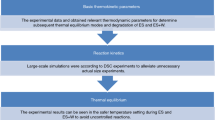Abstract
Hydrogen waste gas has been produced during normal operation of pressurized water reactor nuclear power plant and sent to the atmospheric environment after treatment in confined space areas. In this process, hydrogen explosive atmosphere is formed and it becomes a threat to the production safety. This article analyzed the potential release resource and explosive environment in the wastes treatment buildings, and presented a few of I&C explosion proof techniques applicable to the nuclear power plant. Commonly used explosion proof techniques of I&C design include flameproof enclosure type and intrinsically safe type. Flameproof enclosure technique focuses on the integrity while intrinsically safe technique emphasizes the compatibility of equipment installation environment and all the apparatuses in the system. The analyses show that the explosive gas atmosphere can be classified as secondary zone and application of different explosion proof techniques should take consideration of different aspects.
Access this chapter
Tax calculation will be finalised at checkout
Purchases are for personal use only
Similar content being viewed by others
References
GB 50058-2014 Code for design of electrical installations in explosive atmosphere.
SY/T 6671-2006 Recommended practice for classification of locations for electrical installations at petroleum facilities classified as class I, zone 0, zone 1, and zone 2.
IEC 60079-1-2007 Explosive atmospheres-part 1: Equipment protection by flameproof enclosures “d”.
IEC 60079-11-2006 Explosive atmospheres-part 11: Equipment protection by intrinsic safety “i”.
SUN, J. P., WANG, Z. L., LIU, X. Y., ZHANG, L. Y., & CUI, L. Z. (2010). The distributed parameters and discharge characteristic of communication and signal cable. Journal of China Coal Society, 7, 040.
IEC 60079-25-2010 Explosive atmospheres-part 25: Intrinsically safe electrical systems.
Li, S.L. (2000). The application of safety barrier in intrinsically safe electrical systems. Automation in Petro-Chemical Industry, (1), 6–7.
Author information
Authors and Affiliations
Corresponding author
Editor information
Editors and Affiliations
Rights and permissions
Copyright information
© 2017 Springer Nature Singapore Pte Ltd.
About this paper
Cite this paper
Xu, D., Huang, H., Bo, JJ. (2017). The Research About Explosive Gas Atmosphere and Explosion Proof Technique of Waste Gas Treatment System in Nuclear Power Plant. In: Xu, Y. (eds) Nuclear Power Plants: Innovative Technologies for Instrumentation and Control Systems. SICPNPP 2016. Lecture Notes in Electrical Engineering, vol 400. Springer, Singapore. https://doi.org/10.1007/978-981-10-3361-2_6
Download citation
DOI: https://doi.org/10.1007/978-981-10-3361-2_6
Published:
Publisher Name: Springer, Singapore
Print ISBN: 978-981-10-3360-5
Online ISBN: 978-981-10-3361-2
eBook Packages: EnergyEnergy (R0)




